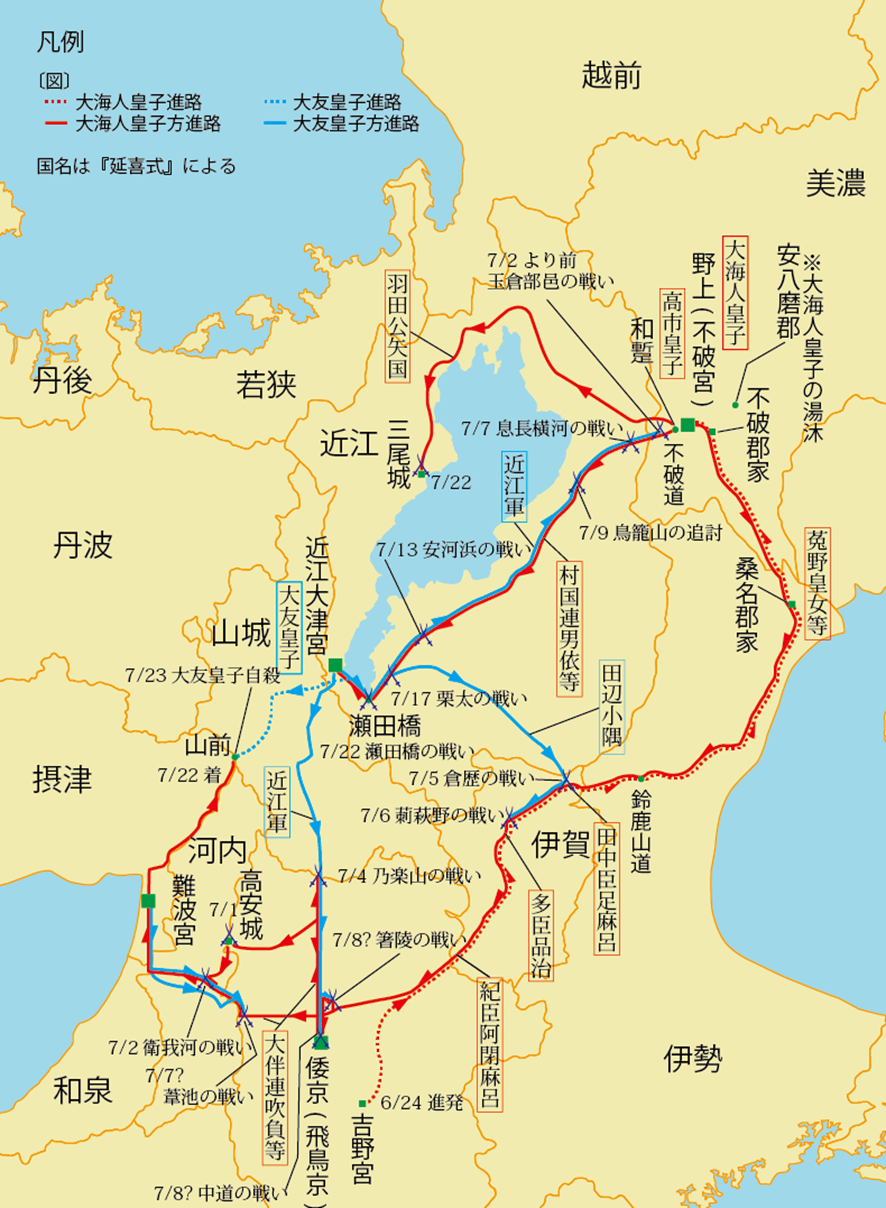Wandering North of the Lake Biwa - The Tomb of Prince Hikoushi, APR, 2024
- 羽場 広樹

- May 3, 2024
- 4 min read
If you drive west on the Meishin Expressway, you will come across many historic sites that will make you want to get off along the way. After passing Sekigahara and entering Omi, the road branches off at Maibara, heading south to the fertile Omi Plain, filled with shrines, castles, and temples, and if you head north along the Hokuriku Expressway, you will come across Hikone Castle, Odani Castle, and the ancient battlefields of Anegawa and Shizugatake. Lake Biwa tapers off as you admire the solitary floating island of Chikubushima, and the mountains that run out to the Sea of Japan come into view. Several roads have been built connecting Wakasa Bay and Lake Biwa since ancient times, but all of them developed as transportation systems connecting the Keihanshin area via water transport on Lake Biwa.
Emperor Keitai was the fifth-generation descendant of Emperor Ojin, and after Emperor Buretsu died without an heir, he was elected to the throne by powerful clan leaders in Yamato. The grave of his father, Prince Hikoshi, is believed to be the same as the Tanaka Ozuka Kofun Tomb in Takashima on the west side of the lake.
The 5th century was a time when there were few documents, and the credibility of the record was questioned due to the fact that the lineage of the fifth generation descendant was long removed from the mainstream of the Imperial family. The spell of the blind Marxist view of history after the war seems to have faded, and it is expected that more and more independent research and discoveries into the mysterious 4th century and the subsequent 5th century will emerge in the future.
Emperor Ojin and the next Emperor Nintoku are famous emperors whose tombs are in large keyhole-shaped tombs in the Mozu Kofun Group, but Emperor Nintoku's half-brother (Prince Wakanukefutamata) was Prince Hikonushi's great-grandfather, and his grandfather's (Prince Ohodo) sister became the wife of Emperor Ingyo and gave birth to two emperors (Anko and Yuryaku), so it is thought that the family played an important role as the maternal family of the main imperial family during the so-called Five Kings period. Later, Prince Ohi, the son of Prince Oi, married the daughter of Mugetsu govenor of Mino province, Prince Hikonushi married Furihime of Mikuni governor in Echizen province, and Emperor Keitai before his accession to the throne married a wife from the Owari clan (Menokohime), and this lineage strengthened its ruling system, mainly in northern Omi, based on blood ties with powerful local clans. Located at an important base for water transport to the Kinai region, it was probably in a position similar to that of an "Imperial family" that had not only lineage but also economic power. Emperor Keitai married Emperor Buretsu's younger sister (Princess Teshiraka) and had a child who would later become Emperor Kinmei, but later made his child with Menokohime (Emperor Ankan) the crown prince, so it does not seem that his authority was necessarily dependent on the lineage of Emperor Buretsu.
The Azumi River is located near the tumulus, and is also the name of a JR station. It is the largest river flowing into Lake Biwa, and forms the largest alluvial fan on the west side of the lake. The Azumi clan is said to have originated in Azumi-go, Kasuya County, Chikuzen, and is often mentioned in the Nihon Shoki as one of the sea people (people of navigation and fishing). There are place names that originate from all over Japan, but the most famous one is the ancestors of Azumino, Nagano Prefecture, who entered Shinano from the Kubiki Plain in search of jade. Did the people of the ancient Azumi River contribute to the rule of northern Omi under Prince Hikoushi and Emperor Keitai, and the water transportation industry of the Sea of Japan and Yodo River system, with their navigation skills and military skills?
Moving forward to the 10th century, the Engishiki (the implementing rules of the Ritsuryo Code) divided over 60 provinces into four ranks according to their national power (Taikoku=great province, Jokoku, Chukoku, gekoku). Among them, the three provinces of Omi, Yamato, and Kawachi in the Kinai region were defined as great provinces, and Echizen was one of them. Before the Nara period, Kaga and Noto were also included, so it is assumed that Echizen held an even more important position. Controlling Omi and Echizen, including the power of the Jokoku provinces of Mino and Owari, would have been a shortcut to dominating the country.
Going further back in time, the population of each country in the year 5 of the Meiji era was as follows: Omi 510,000, Echizen 400,000, Yamato 360,000, Mino 600,000, Owari 640,000, Settsu including Osaka 800,000, Yamashiro including Kyoto 490,000. Musashi including Edo was 1.71 million. Comparing with the time immediately after the Meiji Restoration when urbanization had progressed to a certain extent, in 1873 the population of Echizen + Wakasa was 480,000, and the current population of Fukui Prefecture is 760,000. The population of Japan has quadrupled from 30 million to 120 million, but Fukui Prefecture has only 1.6 times the population, and the regions of Japan that have not been affected by urbanization and are depopulating are likely to follow a similar trend. It is said that the total population of Japan in the 6th and 7th centuries was about 5 million, but Omi and Echizen would have been even more important as the rich backyard of the capital. The Jinshin War occurred 140 years after the death of Emperor Keitai.












Comments